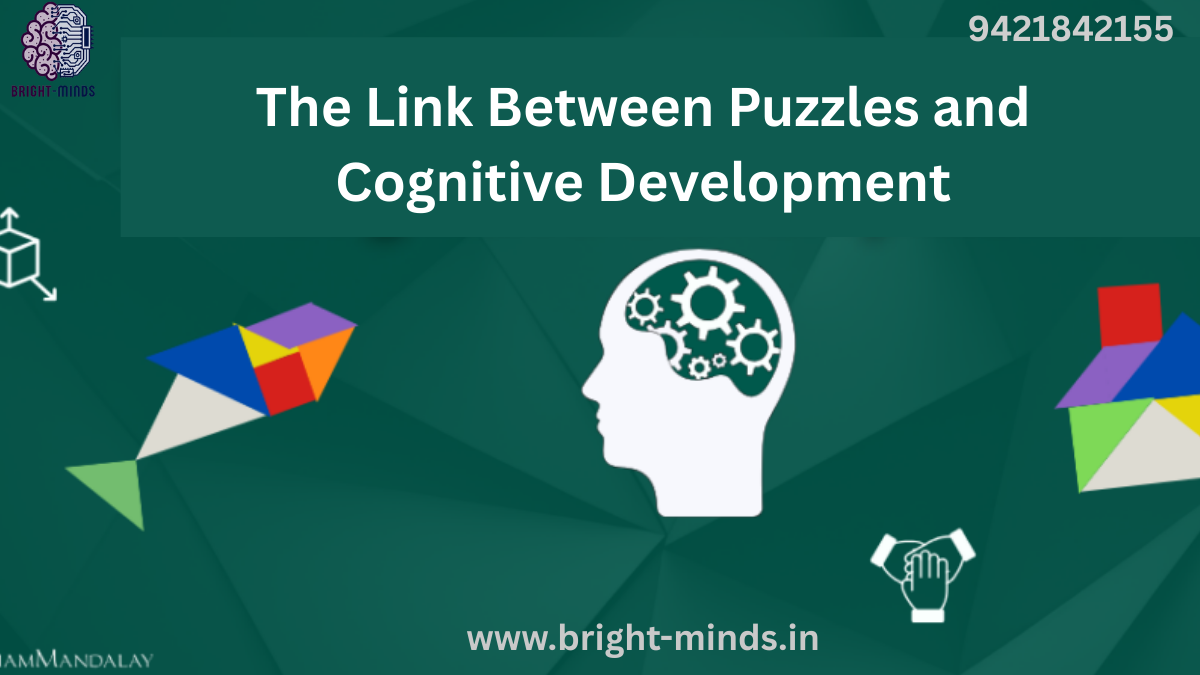🧩 The Link Between Puzzles and Cognitive Development
Have you ever watched a child solve a jigsaw puzzle — the way their eyes light up when they find the right piece, or how they rotate shapes, test possibilities, and persist until the picture is complete? That simple moment reflects a powerful truth: puzzles are more than games — they’re brain-building tools.
In today’s fast-paced world, developing sharp thinking skills early on isn’t just beneficial — it’s essential. Whether you’re a parent, educator, or someone working in a child-focused organization, understanding the link between puzzles and cognitive development can unlock long-term success for young learners.
Let’s explore how puzzles shape the brain, the market trends driving puzzle-based learning, and how you can use this knowledge to build a stronger educational foundation — both at home and in your company initiatives.
🧠 What is Cognitive Development?
Before we dive into puzzles, let’s clarify the term cognitive development.
Cognitive development refers to how a child thinks, explores, and figures things out. It includes skills like:
- Problem-solving
- Memory
- Concentration
- Logical reasoning
- Spatial awareness
- Language and communication
These are the core functions we use every day — not just in school, but in real life and even in the workplace.
🧩 How Do Puzzles Support Cognitive Growth?
Puzzles may seem simple, but their impact is deep. Here’s how they help children (and adults!) build essential brain skills:
1. Improves Problem-Solving Abilities
Puzzles present challenges that require strategic thinking. Children learn to test different solutions, evaluate results, and try again — which mirrors real-life decision-making.
🔍 Example: A child attempting a Sudoku puzzle learns how to scan, analyze, and plan — key skills in business and finance.
2. Enhances Memory and Focus
Remembering colors, shapes, and positions helps improve short-term memory. Repetition builds retention — a crucial academic skill.
3. Strengthens Spatial Reasoning
Matching puzzle pieces, especially in 3D puzzles or tangrams, helps children visualize how objects fit together — an important skill in math, engineering, and even architecture.
4. Develops Fine Motor Skills
Manipulating puzzle pieces helps younger children develop hand-eye coordination and motor control, setting the stage for writing and drawing.
5. Boosts Patience and Perseverance
Not every piece fits right away. Through puzzles, kids learn to cope with failure, try new strategies, and build resilience — all while having fun.
📊 Industry Insights & Market Trends
The educational toy market, especially the puzzle segment, has seen a sharp rise over the last decade. Here’s what the numbers show:
- The global puzzle market is expected to reach $10.8 billion by 2030, with a strong emphasis on STEM and cognitive development products.
- Parents are increasingly investing in educational play that prepares children for the 21st-century workforce.
- Corporate training teams and schools are also using puzzle-based problem-solving games to teach critical thinking.
Companies that integrate puzzles into early learning products or educational initiatives are leading the way in innovation and engagement.
🔄 Real-World Applications
Puzzles aren’t just child’s play. Their real-world impact spans across age groups and industries:
- In schools: Puzzle-based learning is used to teach everything from vocabulary to coding.
- In tech & finance: Recruiters often use logic puzzles during interviews to assess analytical thinking.
- In the workplace: Puzzles are used in team-building activities to boost collaboration and innovation.
- In mental health: Therapists use puzzles to help patients with memory, focus, and stress relief.
So, when children grow up playing with puzzles, they’re not just having fun — they’re preparing for a lifetime of success.
💡 Practical Tips for Parents & Educators
Want to bring more puzzle power into your learning environment? Here’s how to get started:
✅ 1. Start Simple
Choose puzzles that match the child’s age and skill level — jigsaw puzzles for toddlers, logic games for older kids.
✅ 2. Make It a Family Activity
Solve puzzles together! It strengthens relationships while modeling problem-solving behavior.
✅ 3. Use Digital Puzzle Apps Wisely
Not all screen time is bad. Select educational puzzle apps that challenge logic and math skills without overwhelming kids.
✅ 4. Incorporate Puzzles in Daily Lessons
For educators: Use crossword puzzles to teach vocabulary, or Sudoku for number skills.
✅ 5. Celebrate Effort, Not Just Results
Praise persistence and creative thinking. This encourages kids to keep going, even when it gets tough.
🚀 Take the Next Step
If you’re inspired by the power of puzzles, you’re in the right place.
At [YourCompanyName], we’re passionate about nurturing young minds through innovative and fun learning tools. Our puzzle-based educational kits and online programs are designed by experts to strengthen core academic and cognitive skills — all while keeping children engaged and motivated.
👉 Explore our beginner-friendly cognitive learning resources today and set your child (or student!) on the path to confident, creative thinking.
🎯 Final Thoughts
Puzzles might look like play, but they hold the key to powerful learning. From enhancing memory to sharpening problem-solving skills, they lay the foundation for academic excellence and life-long success.
So why wait? Introduce puzzles today and watch young minds unlock their true potential — one piece at a time.
You may be interested in this
Prime Numbers for Kids: A Fun and Easy Guide to Understanding Prime Numbers

